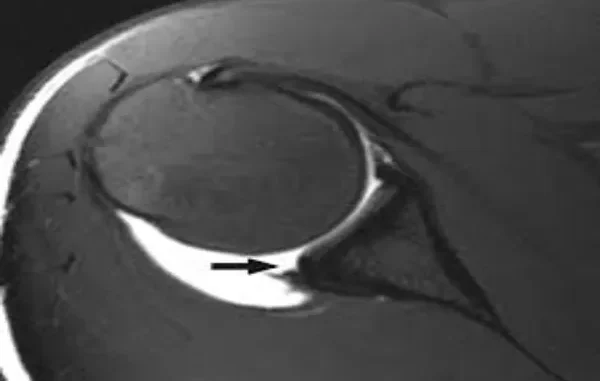
Shoulder pain can be frustrating, especially when it lingers, limits your movement, or keeps you from doing the activities you love. If your pain feels deep in the joint, you might be wondering if it’s more than a strain or muscle issue. One possible cause is a labrum tear, a common shoulder injury that often requires imaging like an MRI to confirm the diagnosis.
So how do doctors determine if you have a labrum tear, and is an MRI always necessary?
Understanding the Shoulder Labrum
The labrum is a ring of cartilage that surrounds the socket of your shoulder joint. Its job is to stabilize the ball of your upper arm bone and keep it from slipping out of place. When this tissue tears, the result can be pain, clicking, weakness, and a feeling that the shoulder is unstable or “catching.”
Labrum tears often happen during sports that involve throwing, overhead movements, or contact, but they can also develop gradually from repetitive stress or aging.
Common Symptoms of a Labrum Tear
While every patient’s experience is different, some of the most common signs include:
- Deep shoulder pain that worsens with movement
- A catching, popping, or grinding sensation in the joint
- Weakness or loss of strength when lifting or rotating the arm
- Shoulder instability, especially during athletic movements
- Difficulty sleeping on the injured side
If you’re experiencing these symptoms, a proper evaluation is the first step toward relief.
The Role of Physical Exams
A skilled orthopedic specialist or physical therapist can often identify a possible labrum tear based on your symptoms and movement patterns. During an exam, they’ll assess your range of motion, perform strength tests, and use specific movements designed to reproduce pain or instability associated with a torn labrum.
However, while a physical exam can point toward a labral injury, it can’t always confirm it. That’s where imaging comes in.
Why an MRI Is Often Needed
Magnetic Resonance Imaging (MRI) allows doctors to see the soft tissues of your shoulder in detail, something standard X-rays cannot do. Since the labrum is made of cartilage, an MRI is one of the most effective ways to identify tears, fraying, or detachment.
In some cases, your doctor may order an MRI arthrogram, which involves injecting a contrast dye into the joint before imaging. This helps the radiologist see small or partial tears that might not appear on a regular MRI.
Can a Labrum Tear Be Diagnosed Without an MRI?
In mild cases, your doctor may make a clinical diagnosis based on your exam, history, and response to treatment. For example, if symptoms improve with rest, physical therapy, and strengthening exercises, imaging may not be immediately necessary.
However, if pain persists or if you’re an athlete or active individual whose performance depends on shoulder strength and stability, an MRI is often recommended. It helps confirm the diagnosis and guides treatment decisions, especially if surgery might be required.
How Level Up Shoulder Approaches Diagnosis
At Level Up Shoulder, the focus is on identifying the root cause of shoulder pain through a combination of movement analysis, physical assessment, and advanced imaging when needed. Each patient receives a personalized plan based on their activity level, symptoms, and goals, whether that involves rehabilitation, targeted therapy, or surgical consultation.
When to Seek Medical Help
If your shoulder pain lasts more than a few weeks, or if you notice clicking, catching, or instability, it’s time to schedule an evaluation. Early diagnosis leads to faster recovery and prevents the tear from worsening.
The Bottom Line
While a physical exam can provide valuable clues, an MRI remains one of the best tools for confirming a labrum tear. Imaging helps your care team understand the exact nature of the injury, which is essential for building an effective treatment plan.
If you suspect a labrum tear, don’t wait for the pain to become unbearable. Schedule a professional evaluation to find out what’s really going on and take the next step toward recovery.

Leave a Reply